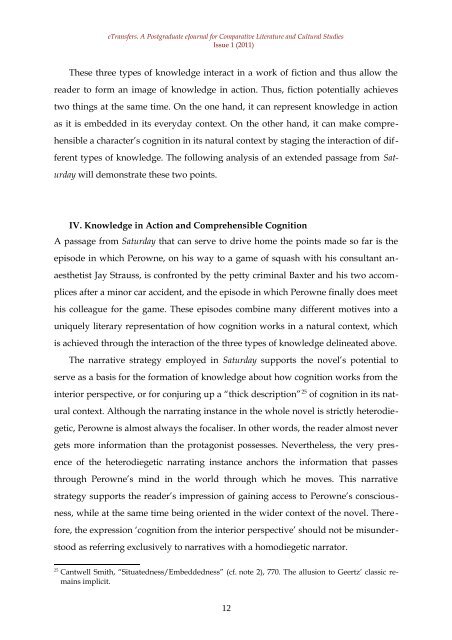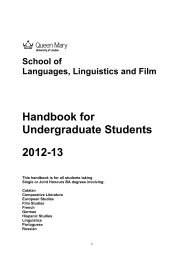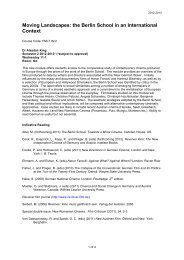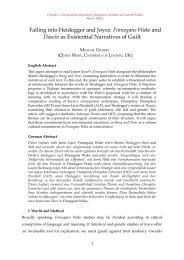You also want an ePaper? Increase the reach of your titles
YUMPU automatically turns print PDFs into web optimized ePapers that Google loves.
eTransfers. A Postgraduate eJournal for Comparative Literature and Cultural Studies<br />
Issue 1 (2011)<br />
These three types of knowledge interact in a work of fiction and thus allow the<br />
reader to form an image of knowledge in action. Thus, fiction potentially achieves<br />
two things at the same time. On the one hand, it can represent knowledge in action<br />
as it is embedded in its everyday context. On the other hand, it can make compre-<br />
hensible a character’s cognition in its natural context by staging the interaction of dif-<br />
ferent types of knowledge. The following analysis of an extended passage from Sat-<br />
urday will demonstrate these two points.<br />
IV. Knowledge in Action and Comprehensible Cognition<br />
A passage from <strong>Saturday</strong> that can serve to drive home the points made so far is the<br />
episode in which Perowne, on his way to a game of squash with his consultant an-<br />
aesthetist Jay Strauss, is confronted by the petty criminal Baxter and his two accom-<br />
plices after a minor car accident, and the episode in which Perowne finally does meet<br />
his colleague for the game. These episodes combine many different motives into a<br />
uniquely literary representation of how cognition works in a natural context, which<br />
is achieved through the interaction of the three types of knowledge delineated above.<br />
The narrative strategy employed in <strong>Saturday</strong> supports the novel’s potential to<br />
serve as a basis for the formation of knowledge about how cognition works from the<br />
interior perspective, or for conjuring up a “thick description” 25 of cognition in its nat-<br />
ural context. Although the narrating instance in the whole novel is strictly heterodie-<br />
getic, Perowne is almost always the focaliser. In other words, the reader almost never<br />
gets more information than the protagonist possesses. Nevertheless, the very pres-<br />
ence of the heterodiegetic narrating instance anchors the information that passes<br />
through Perowne’s mind in the world through which he moves. This narrative<br />
strategy supports the reader’s impression of gaining access to Perowne’s conscious-<br />
ness, while at the same time being oriented in the wider context of the novel. There-<br />
fore, the expression ‘cognition from the interior perspective’ should not be misunder-<br />
stood as referring exclusively to narratives with a homodiegetic narrator.<br />
25 Cantwell Smith, “Situatedness/Embeddedness” (cf. note 2), 770. The allusion to Geertz’ classic re-<br />
mains implicit.<br />
12







